|
Getting your Trinity Audio player ready...
|
When I create an article for The Aswang Project website, I consider many things. First, I like to have a personal interest in the topic I am researching or exploring. Another is how often I receive emails requesting information on a particular topic. If I find it challenging to find material on a particular subject, or the resources are buried deep in non-indexed PDFs, I will share it here instead of answering emails and sending out the links over and over – believe me, I receive hundreds of emails every month, so this is a huge time saver. I had one such instance this morning when I woke up to requests for various synopsis of Sugidanon (Epics of Panay) episodes. This is obviously a school assignment, so I consider how I was contacted (through my website), the format of the emails (these students are seemingly researching through cell phones), and how difficult it was for me to find the information (I try not to encourage laziness). I can see that the students are able to find the TAP site, but unable to find the papers. So I created this post to save myself time in the future, and assist students in their queries.
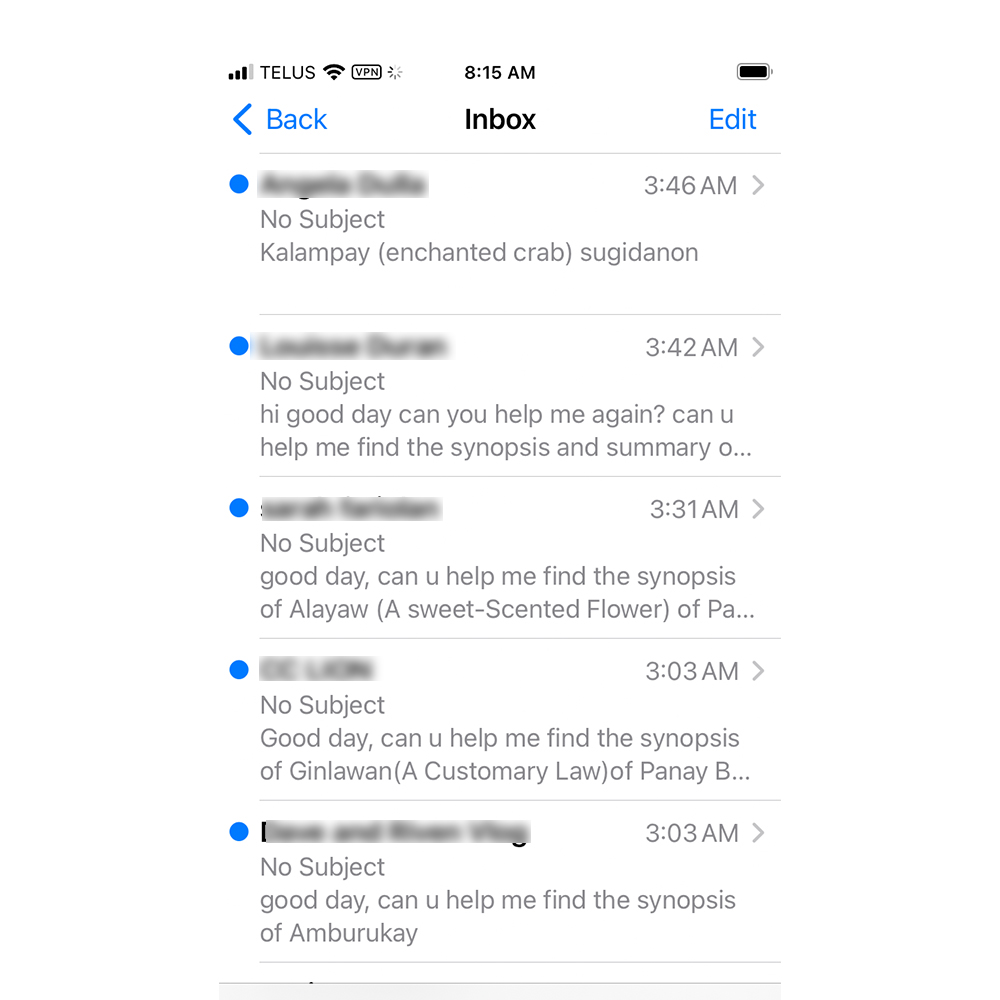
I should also note that I am so thrilled this is being assigned!
Sugidanon
Excerpts from the papers of Alicia Magos Ph.D. and Elsie Caballero-Padernal (links at the bottom).
The mountain dwellers of Central Panay have for centuries resisted various forms of foreign aggression by moving to the interior and more remote areas of Panay Island. Referred to by lowlanders as Bukidnons or Sulods (according to F. Landa Jocano), they refused to be under Spanish (1560-1898) and American (1898-1946) colonization. They called themselves tumandok (literally “native born”) or Pan-ayanon, the later referring to their being in areas near and around the Pan-ay river. Today, despite the inroads of modernization and other forms of cultural assimilation, they still retain some distinctive culture as shown in their singing or chanting of the sugidanon, a term they use for the long chanted stories which were unrecorded for many decades. The epics contain the beliefs, character traits, lifeways, and practices of the Central Panay Indigenous Peoples (IPs).
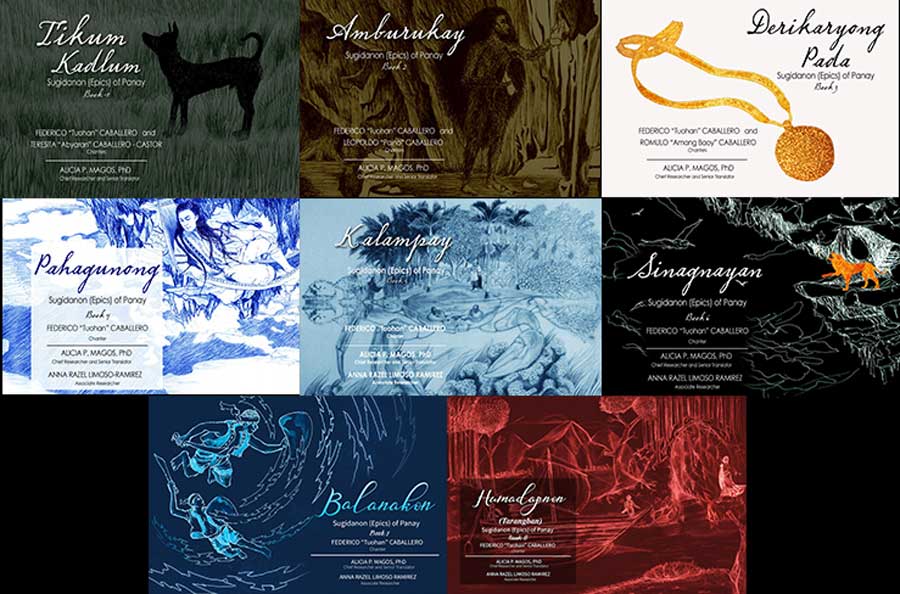
The chanting of epics was an important feature of the social life of the Pan-ayanon. The adventures of Humadapnon, Labaw Donggon, Balanakon, Sinagnayan and other Pan-ayanon warriors constitute the ten epics which Alicia Magos recorded and transcribed, with the help of her staff. Only one or two of these Sugidanon are generally known to younger chanters today. Although epic chanting is known to both Pan-ayanon and Halawodnon mountain dwellers, it is almost gone among the latter. Labaw Donggon, a first generation hero of the epic, is more popular among the Pan-ayanon than Humadapnon. However, older chanters close to the age of 70 and above usually known the epics about both heroes.
Alicia Magos first trekked to the mountains of Central Panay in 1992 when she was granted a sabbatical leave by the U.P. Visayas to record an epic with some funding from the French government. She visited Garangan, a small barangay of 120 households situated at the boundary of Calinog, Iloilo and Tapaz, Cadiz. There, she was introduced to a 73 year old woman Anggoran (Christian name Preciosa; “Susa” Caballero, a shaman-curer who turned out later to be the chanter of Panay Epics referred to them as the sugidanon (from sugid, “to tell”).
The 10 Panay Epics are organized by Alicia P. Magos according to these following titles:
Tikung Kudlum (A Black, Tamed, Enchanted Hunting Dog of Datu Paiburong)

By Magos, Alicia P. et. al.
Available through UP Press
Tikung Kadlum opens with Datu Paiburong and his brother Damara-og going on a hunting trek. Tikung Kadlum, a dog possessing extraordinary powers, leads them into the forest and they come across a tall-strange looking bamboo tree referred to us a buriraw nga kawayan. Paiburong cuts the bamboo tree owned by Makabagting, a man eating witch and his sister Amburukay. Furious, the witch demanded that Paiburong’s two daughters be given as payments for the crime.
Amburukay (Enchanted Hermit Woman)

By Magos, Alicia P. et. al.
Available through UP Press
Amburukay tells of Matan-ayon and Suranggaon who were kept as adopted daughters of Amburukay. They were locked in a golden chamber or burukutan (enclosed structure) and Amburukay vows that her daughters will marry only those who succeed in steeling her gold pubic hair.
One day Labaw Dunggon, a courageous man and a good guitarist breaks one of his guitar string. Hearing about Amburukay’s pubic hair being a good replacement, he undertakes the theft and is successful. How Amburukay searches for the culprit and punishes him is a hilarious part of the story.
Derikaryong Pada (Gold Medallion)
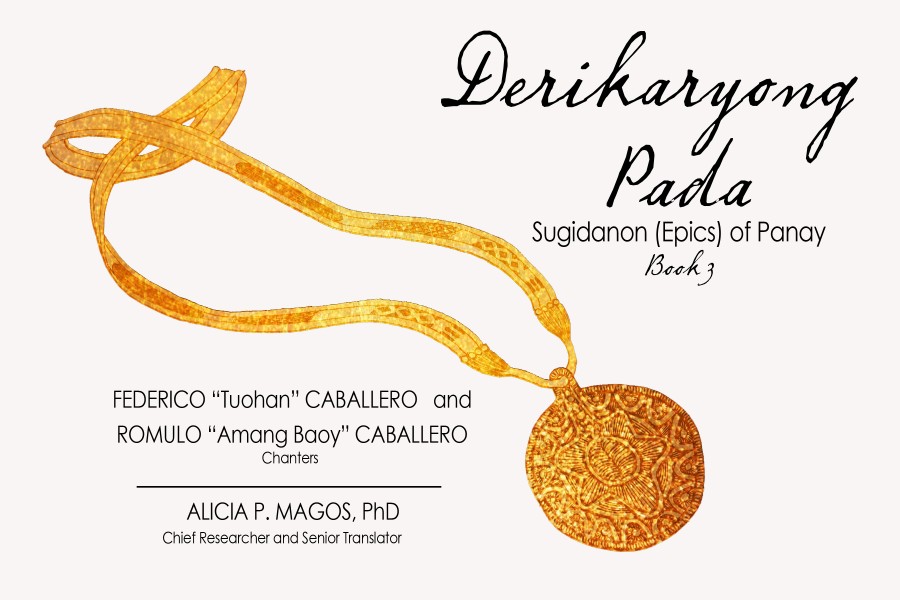
By Magos, Alicia P.
Available through UP Press
Derikaryong Pada Before Matan-ayon, the binukot daughter of Paiburong and Bulawanon was born, she had already been betrothed to Labaw Dunggon, the son of Duranuon and Paubaya. As a mark to that promise, her father Paiburong, had been given a gold medallion by the parents of her husband. But when she was of age she was pursued by Sinagnayan, a brother of Paglambuhan, a renowned witch who had stolen the heirloom sailboat of Matanayon’s parent. Whoever among the suitors can retrieved the sailboat and give it back to Matanayon’s parents will have her hand in marriage. Now Lahaw Dunggon resists this faith.
Balanakon (A Young Epic Warrior)

By Magos, Alicia P. & Ramirez, Anna Razel Limoso
Available through UP Press
Balanakon , a dalagangan (man with extraordinary powers), is convinced by Taghoy a spirit messenger, (who can appear like a dwarf) to fight against Labaw Dunggon to win Matan ayon. While on the voyage Balanakon is halted by Sarandihon, Labaw Dunggon’s brother. That determined to stop Balanakon’s plan, Sarandihon engages Balanakon in a fight. Owing to his greater power, Balanakon has an edge over Sarandihon Labaw Dunggon is fetch by Taghoy to help his brother. Despite the combined efforts of Labaw Dunggon and Sarandihon, they cannot defeat Balanakon but Laonsina intervenes to stop the fight.
Kalampay (Enchanted Crab)
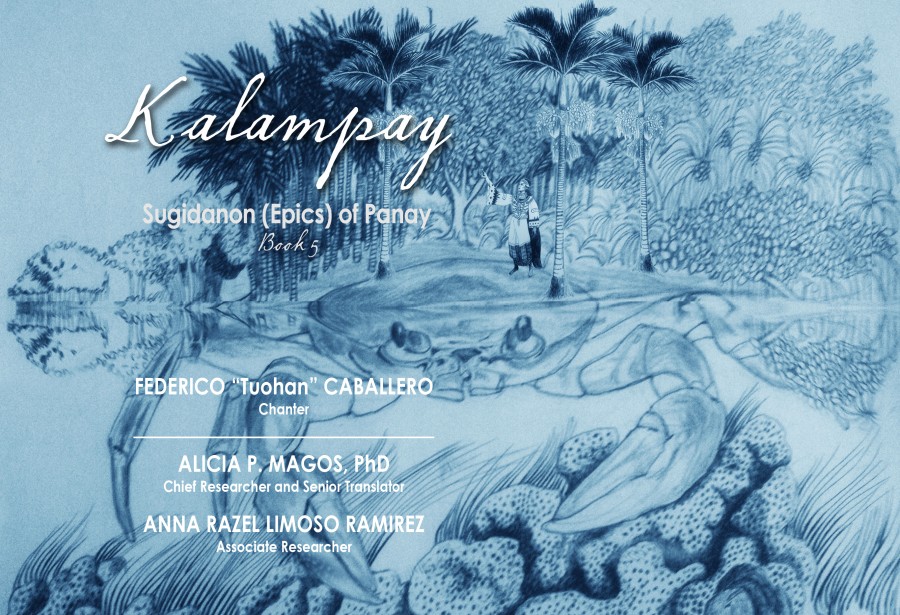
Kalampay Sugidanon (Epics) of Panay Book 5
By Magos, Alicia P. & Ramirez, Anna Razel Limoso
Available through UP Press
Kalampay introduces Masangladon, a man of god-like attributes from the underworld, who devises a plan to abduct Matan-ayon, the beautiful wife of Labaw Dunggon. He causes a tortoise to become an island full of fruit bearing trees so Matan-ayon can be enticed to pick fruits. True indeed, after taking a bath she was intent in picking fruits that she does not notice that a tortoise is taking her to the panibyungan, the source of all water flowing down to the underworld. There Masangladon lives. What happened next is an exciting part of the story.
Pahagunong (Deity of the Upper World)
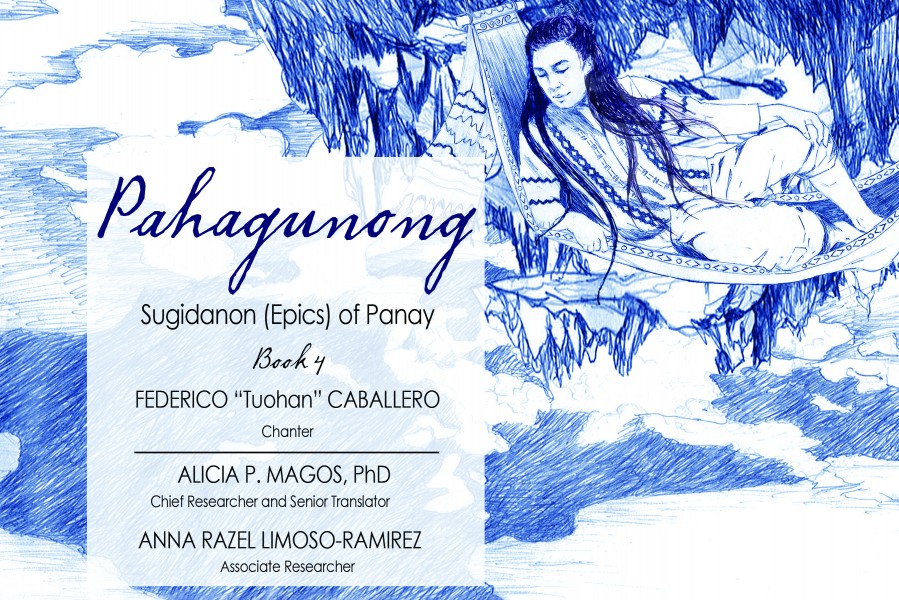
By Magos, Alicia P. & Ramirez, Anna Razel Limoso
Available through UP Press
Pahagunong also titled as ‘Pawikan’, tells about the sad fate of Labaw Dunggon (“Abaw”) who was transformed into a giant turtle by Padilagang Bulan, one of his wives: His senior wife, Matan-ayon and Paubari (Abaws’ brother) follows the tortoise as it swims to the deep sea. Unknown to them, however, Pahagunong, who is a deity staying in the heaven sees the beauteous Matan-ayon and is captivated by her beauty. What happened when the two men meets, Pahagunong and Paubari, is an exciting part of the story.
Sinagnayan (The Breath of Life Kept in the Golden Lion’s Heart)

By Magos, Alicia P. et. al.
Available through UP Press
Pagbihag ni Labaw Donggon kay Sinagnayan or Sinagnayan, opens with a scene where Matan-ayon convinces her husband, Labaw Donggon (Abaw) to fight Sinagnayan so he could have a second wife. Sinagnayans’ wife, Pinailog sa Pinggan (also Matan-ayons’ sister). On his way to Sinagnayan, Abaw passes by the territorial waters of Sarandihon who challenges him to a fight. Sarandihon was about to behead Labaw Donggon but Laon Sina, the arbiter arch goddess, appears to stop him as they are brothers. The rest of the story will tell what happens to Abaws’ original pursuit.
Humadapnon (The Noble Man in a Magical Cave)

By Magos, Alicia P. & Ramirez, Anna Razel Limoso
Available through UP Press
Humadapnon, the longest of ten epics and has four episodes woven in a sea
journey.
Episode 1: Humadapnon (The Noble Man in a Magical Cave)
Humadapnon sa Tarangban, commences with the sea journey of Hamudapnon, in search of Nagmalitong Yawa, the beautiful daughter of Matan-ayon, who alone can match the status of Humadapnon and is worthy to be his wife. He along with him his brother, Dumalapdap and they ride in a golden boat or biday. He is, however, lived by binukot (well kept maiden) engkantos and escaped in the Tarangban (an enchanted cave). How he is retrieved after seven years is the exciting part of the story.
Episode 2: Pagbalukat ka Biday (Retrieving the Golden Boat)
Pagbihag kay Paglambuhan narrates Humadapnon’s quest for Mali’s hand where he has to pass the test of retrieving Kamangyan, and heirloom boat stolen by Paglambuhan before he can marry Mali. How he fought Paglambuhan is breathtaking part of the epic.
Episode 3: Hungaw (The Marriage Arrangement of Humadapnon and Mali)
Paghungaw ni Humadapnon kay Mali, starts with Humadapnon who invites Mali (disguised as Sumasakay) to go with him to Mali’s parents in Halawod. But mali tells him that he should first sail and drop by and stay with the beheaded man’s wife. Humadapnon, however, stayed quite long with Pinatuyang Tun-og and Mali feels very jealous. The rest of the story will tell of Mali’s revenge.
Episode 4: Ginlawan (A Customary Law)
Ginlawan narrates how Dumalapdap (the younger brother of Humadapnon) pursued Pinasibyang, Alon, daughter of Minayonmon, the buruhisan (a man/woman endowed with extra human powers) after the hungaw (traditional wedding) of Humadapnon. However, the latter did not give her consent. Humadapnon, therefore, suggested that he pursued Kinangay sa Bulan. He was accepted and they were married. But later, Humadapnon again pursued Dumalapdap to leave Kinangay and get another woman because they do not match each other as the latter is older. However, Dumalapdap did not have the heart to leave her because he was already with child. As to whether Dumalapdap would later be convinces by his older brother and who the other woman is would be unfolded in this episode.
Nagbuhis (Ceremonial Rite or Offering)
Nagbuhis / Baruhisan (Book 9), portrays Matan-ayon as thin and sickly. An obligatory rite is needed to make her well. Matan-ayon wants her daughter to be initiated as a Dalagangan (a person with innate supernatural powers) so someone can possess her magical powers. On the day by the ritual on the beach, Mali, her daughter, cries bitterly as Humadapnon does not allow to go. She finds out Humadapnon is courting other women. Mali’s bitter revenge is still to be revealed in the epic.
Alayaw (A Sweet-Scented Flower)
Alayaw (Book 10) tells how, Humadapnon is advised by Laon Sina to plant an Alayaw tree in the yard of Malis’ parents. When the tree bears sweet smelling flowers Mali will be enticed to come down from the burukutan (enclosed structure for a well kept maiden) to pick fallen flowers from the yard, thus Humadapnon could have a glimpse of a woman he loves. As to how the beauteous Mali will come down from the burukutan is a most exciting part of the story.
The Important Characters of the Epics
The well-known characters in the sugidanon are given below with the descriptive meanings of their names:
Matan-ayon or Ayon. Her name is given in the sugidanon as Si Huganay si Daw-on si Ayon si Buyukon si Nguyanguya Tungdan si Tangisan Duungan si Paghilalausan Atubang nay Sab-ugon adang nay Buruhisan. Her name is a description of her personality and capacity as binukot (kept maiden). She is very beautiful. Half of her tresses is gold in color. In times of long drought and prolonged rainy days, she could perform the buhis (ritual or feast offering for the buruhisan, like the deity Luyong Kabig, who lives in the sea in the underworld, and Laon Sina, in the upper world. Many noblemen fall in love with her and persistently woo her.
Mali. She is named as Si Nagmalitong Yawa si Nagmaling Diwata si Ginsalo Gin-agaw Humbay sa Hinmayunan Nakiling ko Lintian Nakyang ko Dalugdugan Manugpaungan-ungan Binukot nga Tuyawan Buntog nga Benlisyunan, daughter of Matan-ayon or Ayon. She is known as the most beautiful and powerful binukot in the whole world. Her whole body is golden. She is the wife of Humadapnon. Matan-ayon and Mali are the only characters in the sugidanon who have powers to transform themselves into a male if they are to fight, and into things if they reject sexual advances of a man they do not like. Matan-ayon transforms into a man known as Makalimpong when she replaces Paubari during his fight with Pahagunong, a Datu who courts her when Abaw is in the deep sea after being transformed into a pawikan (sea turtle). Mali transforms herself into a man to retrieve Humadapnon who is trapped inside the Tarangban (enchanted cave). Matan-ayon also transforms herself into “water” when Sinagnayan abducts her while Mali transforms herself into a kandol (wild cucumber).
Labaw Dunggon or Abaw. His name is mentioned in the epic in this manner: Si Kulabo Kulambaw si Umbaw Amantulin Natulinan ka Isog Natulyan ka Bagani, which means he is a brave bagani (folk hero). He is the main character in many stories of the sugidanon. He is characterized as a tall and big man with his chest as big as a door of a house. He is the only character who wears a headgear made of a metal known as moryon, during his battles. He is a sea diver, adventurer, traveler, and treasure hunter. Compared to the other epic characters, he has many wives, because of his wealth and status.
Humadapnon. His name is Si Humadap sa Kilat si Umpud si Kurukyaw si Baniban Duungan Angga Pagsambaludan Ginoo pang Harangdon Datu nga Parangkuton. It means quick and smart, bravest, and most handsome. He is the only male character in the epic whose whole body and hair is gold. He is considered as the most respected man and leader of all bagani or heroes.
SOURCES:
Magos Ph.D., Alicia P., The Sugidanon (Epics) of Central Panay, U.P. Visayas Miag-ao, Iloilo
Caballero-Padernal, E., (2021), The Panay Bukidnon Sugidanon (Epic) and Prototype Glossaries
for Epic Excerpts, Philippine Journal of Social Sciences and Humanities: Danyag Vol. 22 No. 1 & 2
The first 8 volumes of the Sugidanon are available for purchase through Up Press.
Jordan Clark is a Canadian born descendant of Scottish immigrants living on the homelands of the Lekwungen speaking peoples. His interest in Philippine myth and folklore began in 2004. Finding it difficult to track down resources on the topic, he founded The Aswang Project in 2006. Shortly after, he embarked on a 5 year journey, along with producing partner Cheryl Anne del Rosario, to make the 2011 feature length documentary THE ASWANG PHENOMENON – an exploration of the aswang myth and its effects on Philippine society. In 2015 he directed “The Creatures of Philippine Mythology” web-series, which features 3 folkloric beings from the Philippines – the TIKBALANG, KAPRE and BAKUNAWA. Episodes are available to watch on YouTube. Jordan recently oversaw the editing for the English language release of Ferdinand Blumentritt’s DICCIONARIO MITOLÓGICO DE FILIPINAS (Dictionary of Philippine Mythology) and is working on two more releases with fellow creators scheduled for release later this year. When his nose isn’t in a book, he spends time with his amazing Filipina wife of 20 years and their smart and wonderful teenaged daughter.


